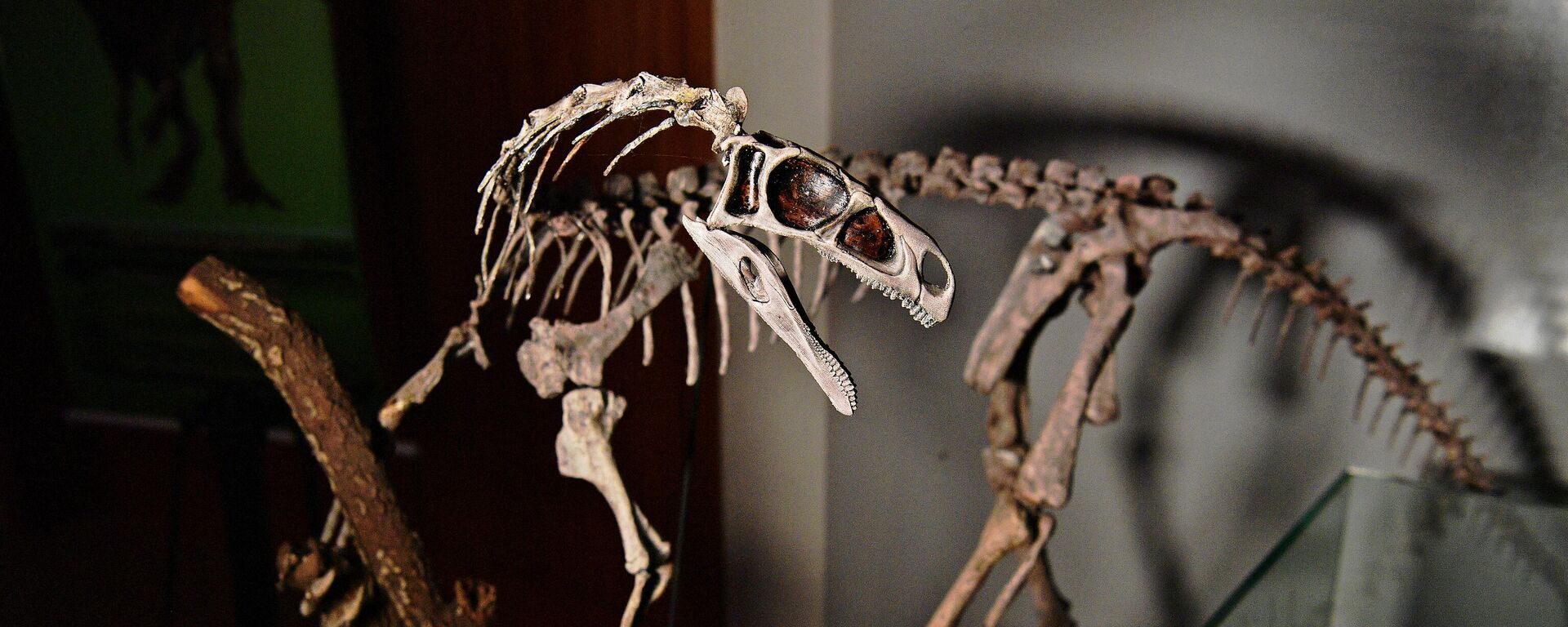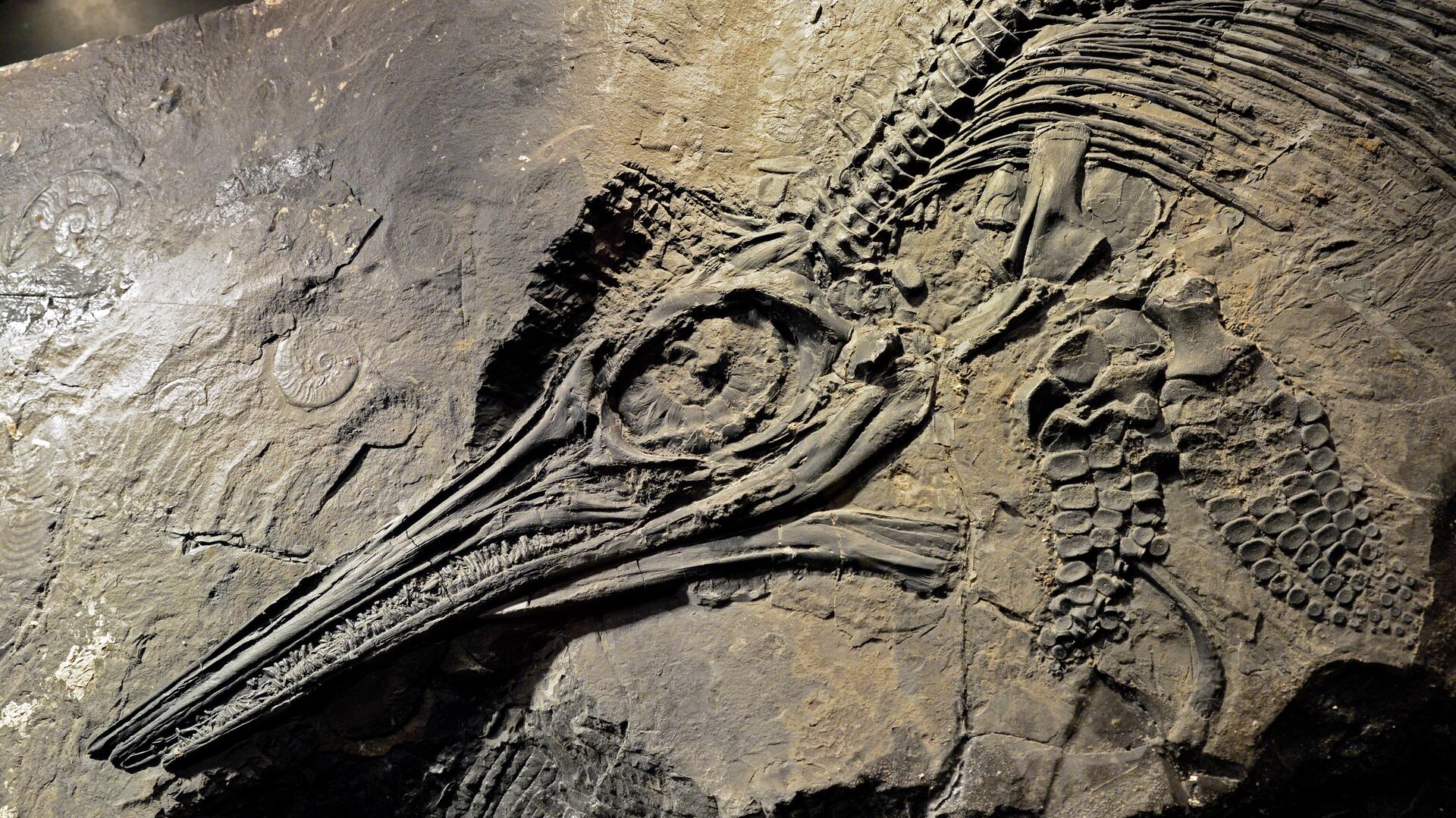https://sputnikglobe.com/20240418/new-species-of-giant-aquatic-dinosaur-identified-thanks-to-fossil-found-in-britain-1117999067.html
New Species of Giant Aquatic Dinosaur Identified After Fossil Found in Britain
New Species of Giant Aquatic Dinosaur Identified After Fossil Found in Britain
Sputnik International
The fossilized remains discovered by a father-daughter duo on England’s coast a few years ago apparently belonged to a giant prehistoric creature that dwelled in Earth’s oceans millions of years ago.
2024-04-18T17:56+0000
2024-04-18T17:56+0000
2024-04-18T20:32+0000
beyond politics
england
university of manchester
dinosaur
fossil
discovery
science & tech
https://cdn1.img.sputnikglobe.com/img/07e6/05/01/1095175696_0:161:3067:1886_1920x0_80_0_0_c9360daa7294e6f2357fd8009e9b1677.jpg
According to local media reports, Justin Reynolds and his daughter Ruby found the huge, over 2 meter long remains of the creature’s jawbone on a beach in Somerset back in 2020.The father-daughter duo then enlisted the help of Dr. Dean Lomax, a palaeontologist at The University of Manchester, and a fossil collector named Paul de la Salle who previously found a giant jawbone on the coast of Somerset in 2016, and continued the search.After the final fragment of the jawbone was discovered by the end of 2022 a team of researchers led by Dr. Lomax concluded the fossil belonged to a new species of giant ichthyosaur which Sky News reports would have been roughly the size of a blue whale.The over 25-meter long creature, dubbed Ichthyotitan severnensis, was dated to a period over 200 million years ago."I was amazed by the find. In 2018 my team including Paul de la Salle studied and described Paul's giant jawbone and we had hoped that one day another would come to light,” Dr. Lomax said as quoted by the media outlet. "This new specimen is more complete, better preserved, and shows that we now have two of these giant bones – called a surangular – that have a unique shape and structure.”
https://sputnikglobe.com/20240126/new-chicken-from-hell-dinosaur-fossils-discovered-by-phd-student-1116397265.html
england
Sputnik International
feedback@sputniknews.com
+74956456601
MIA „Rossiya Segodnya“
2024
Sputnik International
feedback@sputniknews.com
+74956456601
MIA „Rossiya Segodnya“
News
en_EN
Sputnik International
feedback@sputniknews.com
+74956456601
MIA „Rossiya Segodnya“
Sputnik International
feedback@sputniknews.com
+74956456601
MIA „Rossiya Segodnya“
dinosaur fossil, dinosaur bones, fossil discovery
dinosaur fossil, dinosaur bones, fossil discovery
New Species of Giant Aquatic Dinosaur Identified After Fossil Found in Britain
17:56 GMT 18.04.2024 (Updated: 20:32 GMT 18.04.2024) The fossilized remains discovered by a father-daughter duo on England’s coast a few years ago apparently belonged to a giant prehistoric creature that dwelled in Earth’s oceans millions of years ago.
According to local media reports, Justin Reynolds and his daughter Ruby found the huge, over 2 meter long remains of the creature’s jawbone on a beach in Somerset back in 2020.
The father-daughter duo then enlisted the help of Dr. Dean Lomax, a palaeontologist at The University of Manchester, and a fossil collector named Paul de la Salle who previously found a giant jawbone on the coast of Somerset in 2016, and continued the search.
After the final fragment of the jawbone was discovered by the end of 2022 a team of researchers led by Dr. Lomax concluded the fossil belonged to a new species of giant ichthyosaur which Sky News reports would have been roughly the size of a blue whale.

26 January 2024, 03:56 GMT
The over 25-meter long creature, dubbed Ichthyotitan severnensis, was dated to a period over 200 million years ago.
"I was amazed by the find. In 2018 my team including Paul de la Salle studied and described Paul's giant jawbone and we had hoped that one day another would come to light,” Dr. Lomax said as quoted by the media outlet. "This new specimen is more complete, better preserved, and shows that we now have two of these giant bones – called a surangular – that have a unique shape and structure.”



